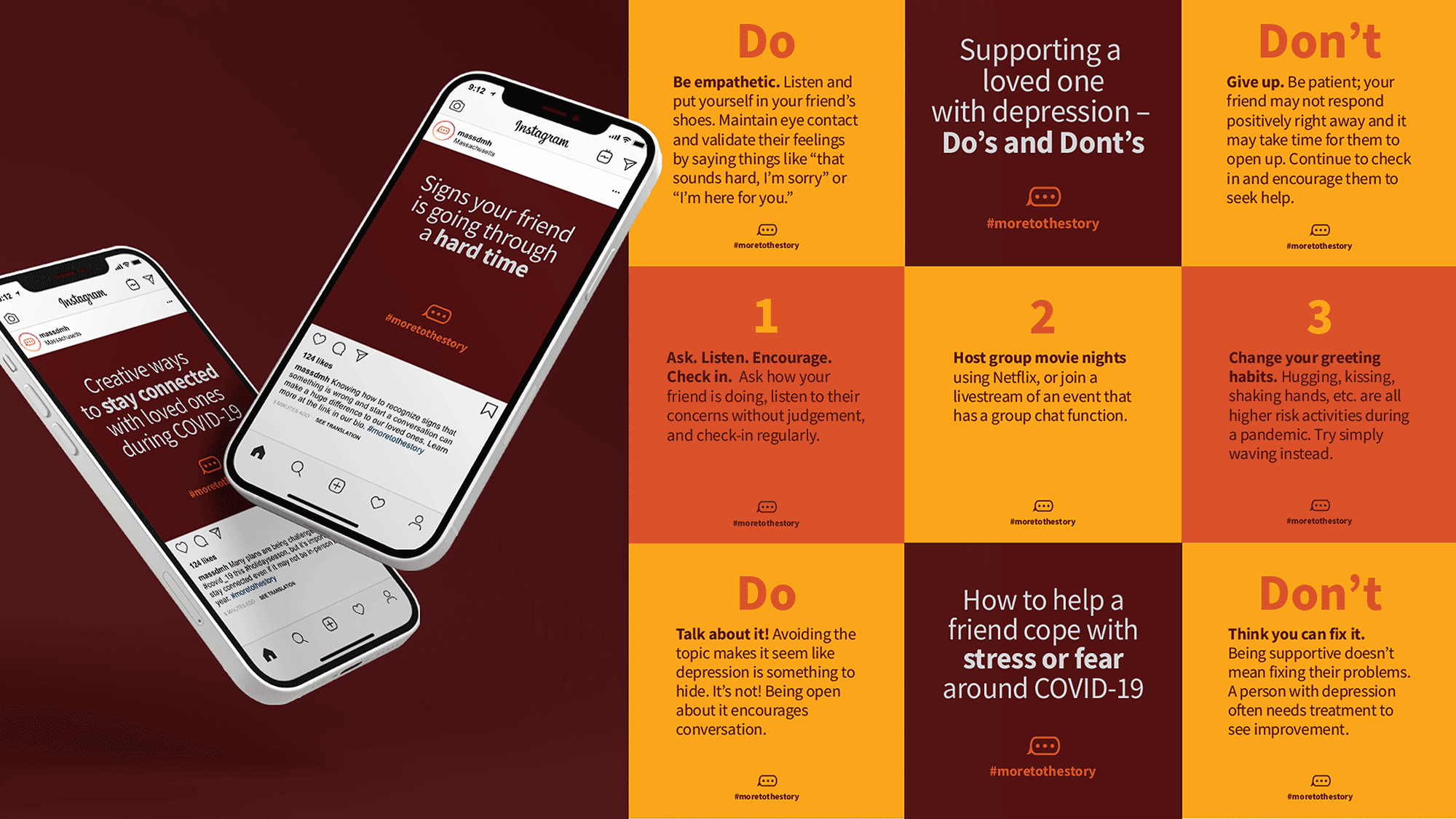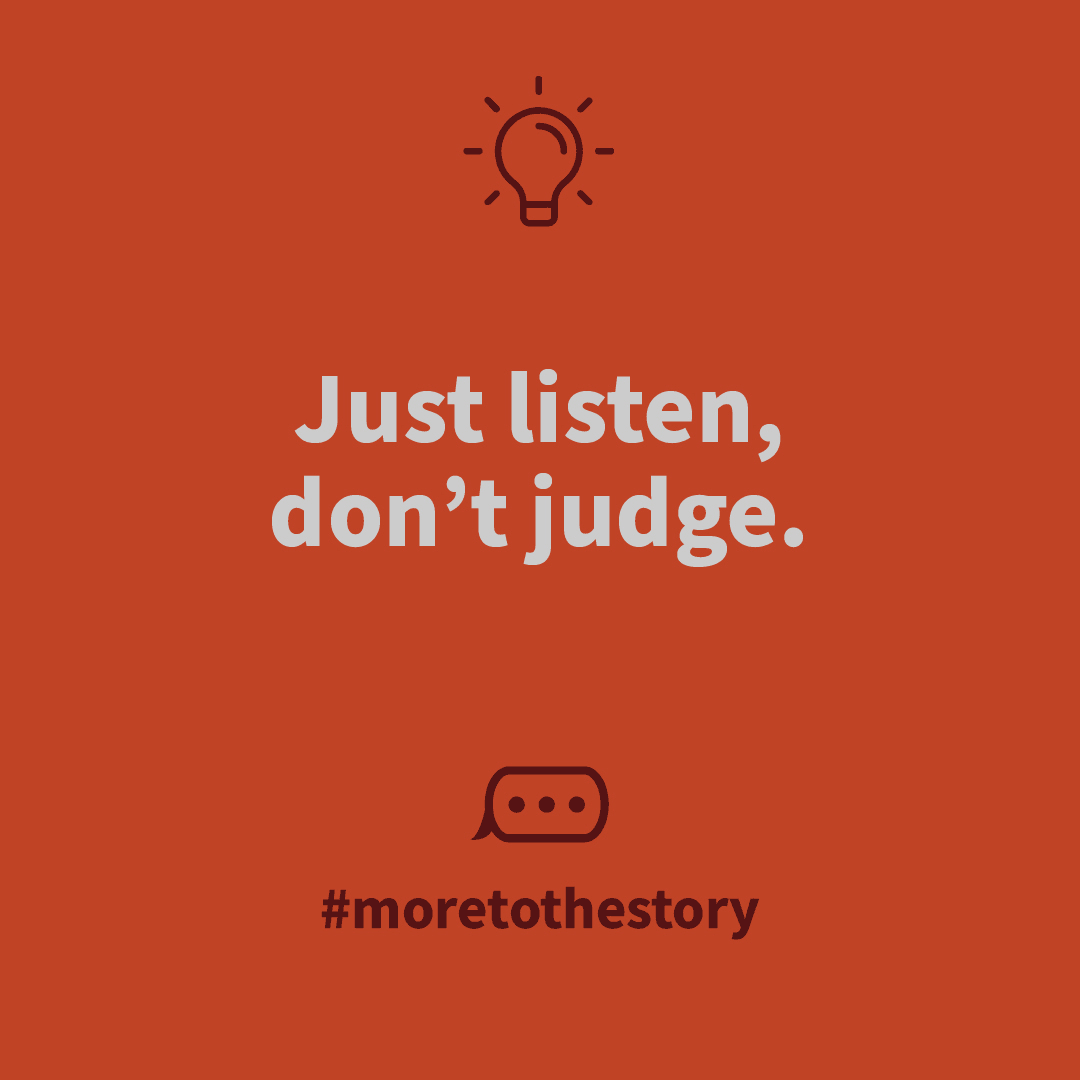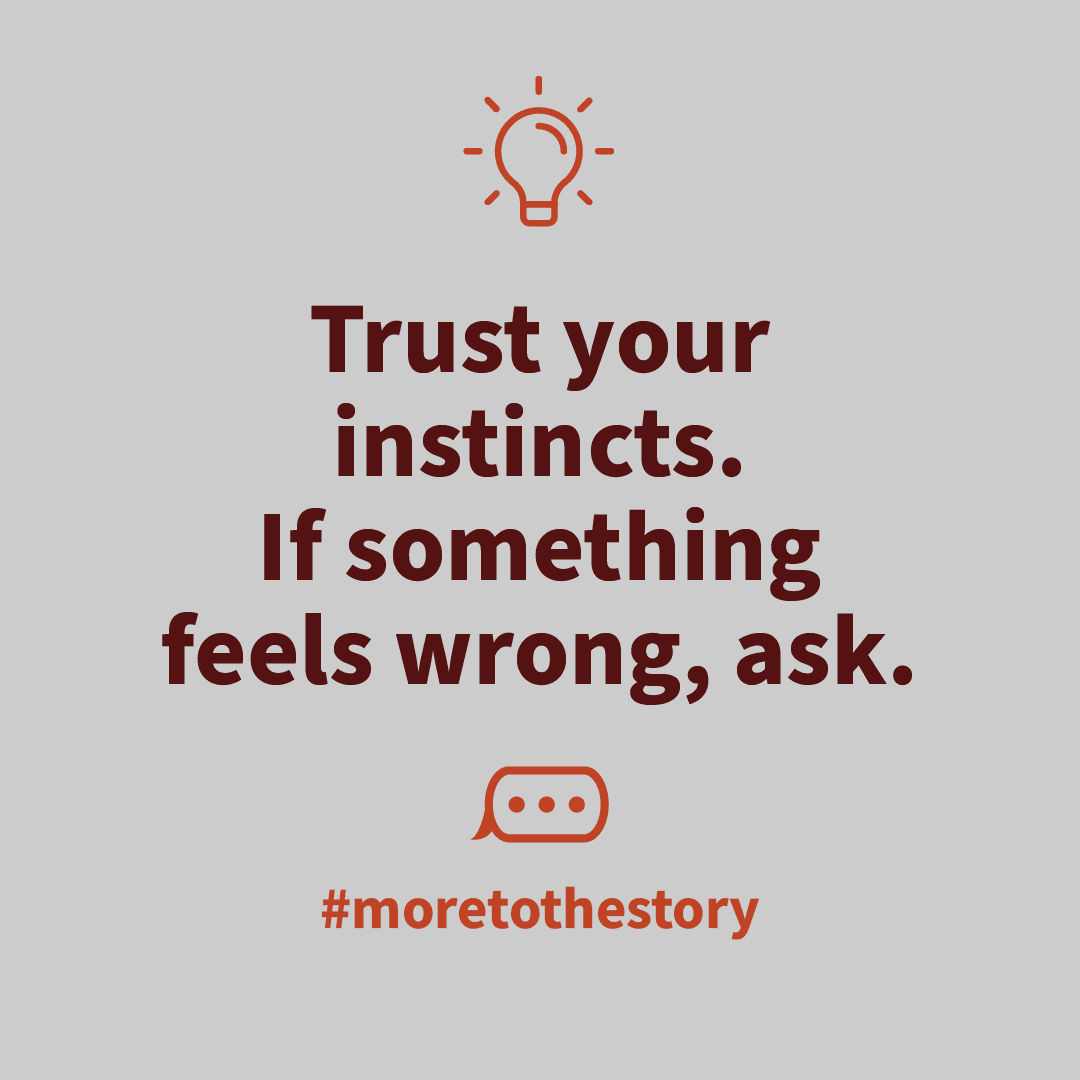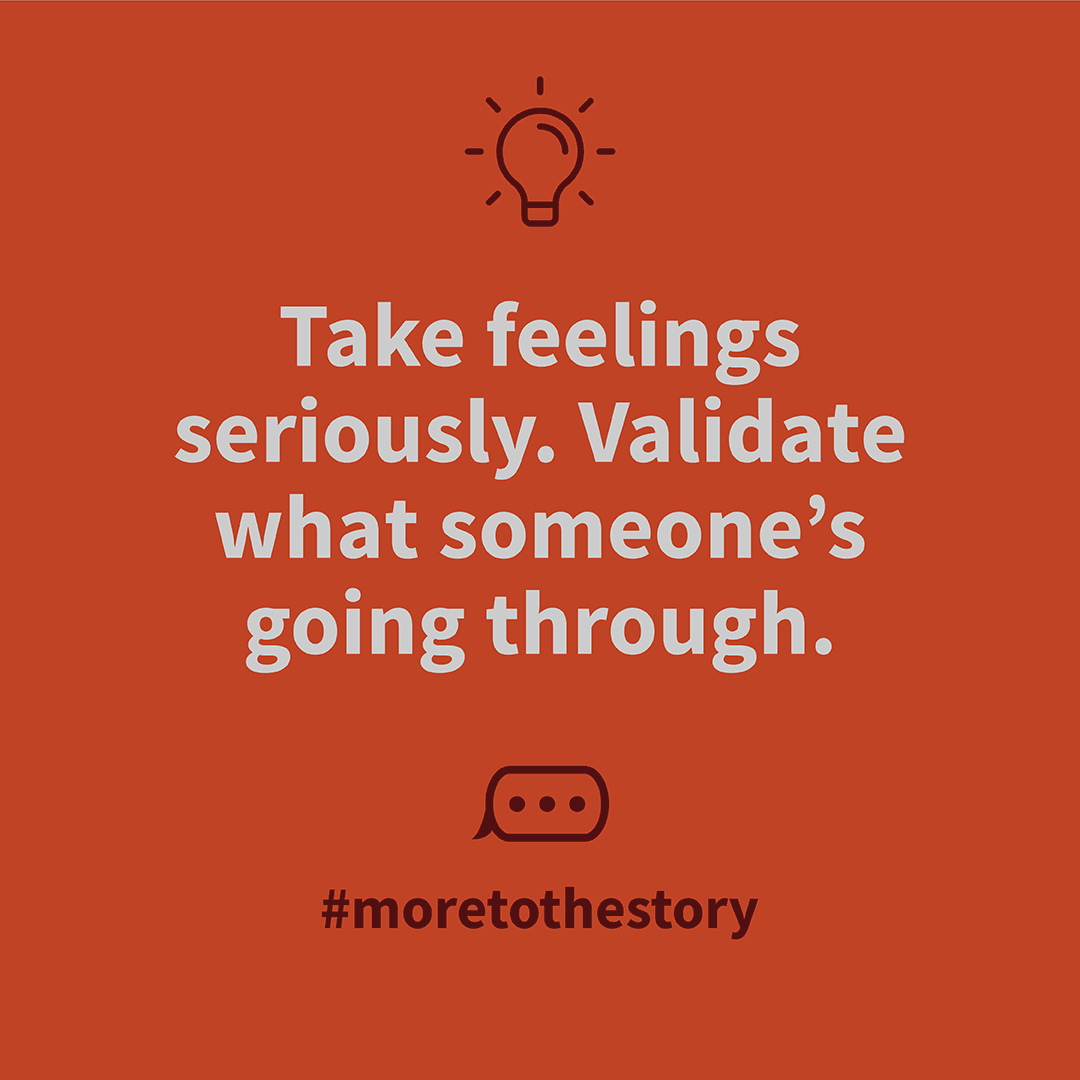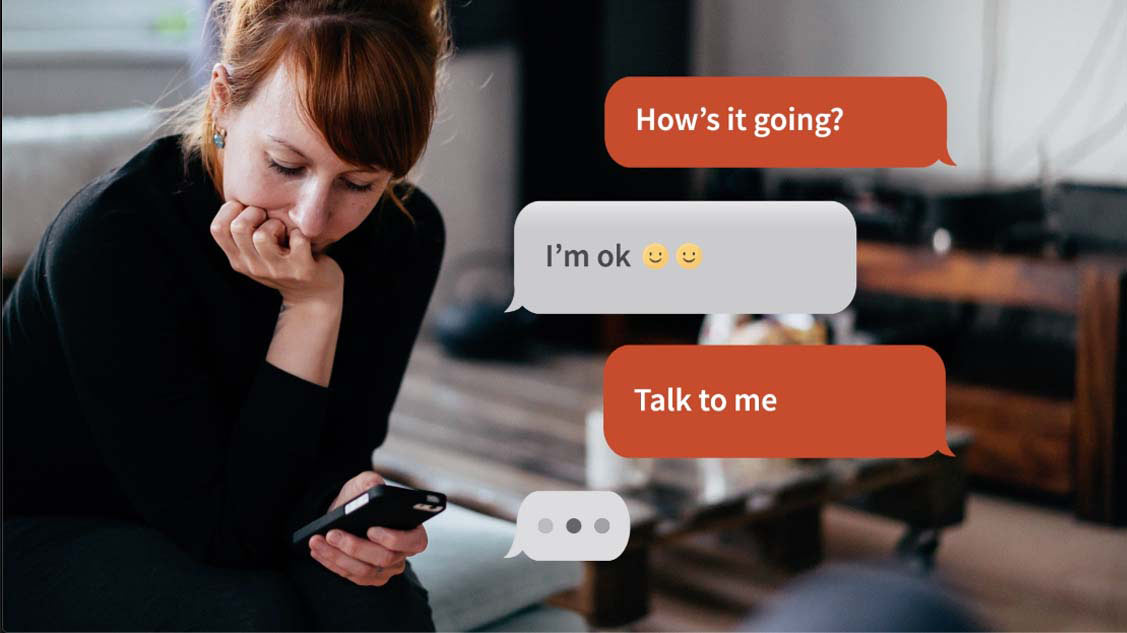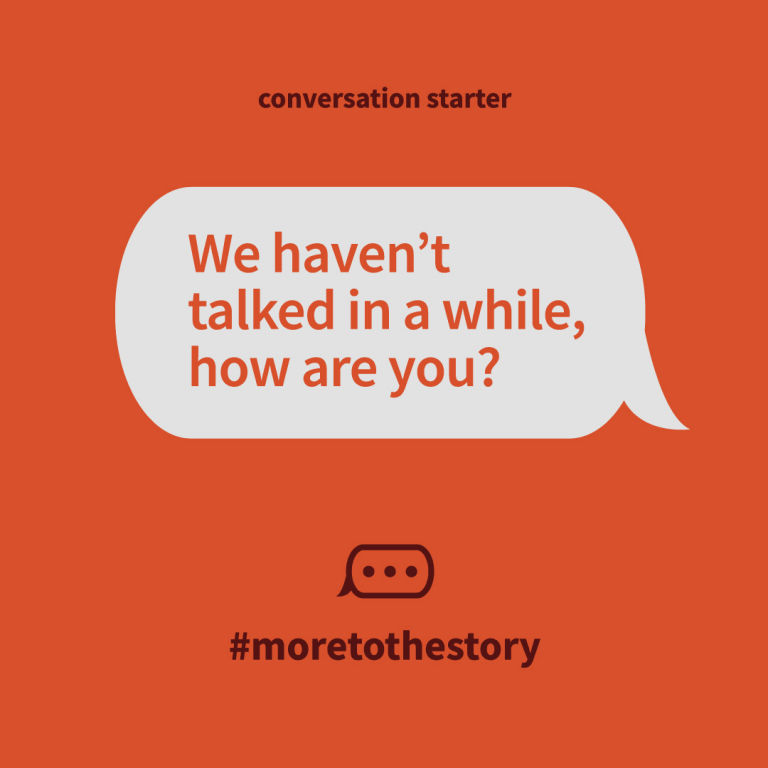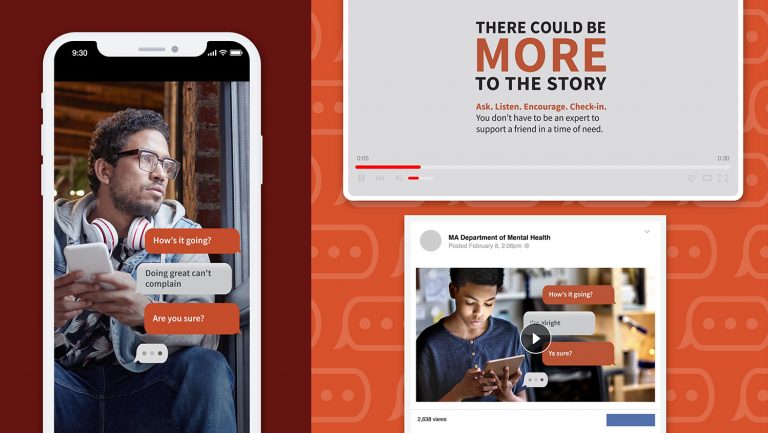
Finding more
to the story
Massachusetts Department of Mental Health
The Challenge
A deeply ingrained stigma
It’s clear our culture has a problem with mental health. We use words that demean and ridicule; we watch movies that depict people with behavioral health issues as odd or dangerous; we listen to newscasts that link mental illness with violence. What’s worse, this stigma is often internalized. When the Massachusetts Department of Mental Health (DMH), Massachusetts Department of Public Health (DPH), Executive Office of Health and Human Services (EHS), and Massachusetts Senate President Karen Spilka’s office decided to work together to address mental health stigma, they commissioned Argus to develop an awareness and behavioral change campaign grounded in research, evidence, and social marketing principles.
One thing was clear from the get-go: mental health stigma is a complex problem. What are the root causes? How do we align stakeholders with different passions and goals? And how do we ensure we aren’t making promises we can’t keep due to access of care?
Services Provided:
- Social/Cause Marketing
- Advertising
- Video/Photography
- Social Media

“The tagline encouraged people to pay attention and listen beyond the words.”
The Solution
Reaching out when it counts
Working with a behavioral health advisory board made up of subject matter experts and advocates from academia, nonprofits, private practices, and institutions, we dove into formative research. We interviewed every member of the board, conducted an environmental scan, and reviewed academic research and public perception. We quickly learned that mental health issues are very common, affecting 1 in 5 of us. That means that everyone knows someone living with a behavioral health issue, and stigma affects all of us, across all ages and demographics. But to address the problem upstream, it was clear that we should lead with teens and emerging adults (14-26), since they’re both heavily affected and receptive to change.
As we discovered, the market is pretty saturated with anti-stigma campaigns, most of which focused on “humanizing” people dealing with mental health issues or encouraging individuals to seek professional help. To stand out, we centered our campaign on the first line of defense: the parents, friends, teachers, and trusted adults who are in a position to notice someone’s emotional pain. The tagline “there could be more to the story” encouraged our audience to pay attention, listen beyond the words, and create a safe space for an honest conversation about mental health.
We created digital animations and a TV spot that modeled the desired behavior to normalize the act of reaching out, and show how it can make a positive difference to a person in need. The campaign focused on social platforms like Instagram, TikTok, and Snapchat to meet our audience where they already are. We extended the paid media with sharable organic content, including social tiles and carousels with advice, tips, and conversation starters. Together with experts at DMH, we also created landing pages within mass.gov with resources, tools, and more information for the support systems.
The Results
Expanding the conversation about mental health
The “More to the story” media campaign went on to deliver over 21.2 million impressions across all platforms. Local politicians, advocates, and celebrities shared the campaign posts resulting in over 150 new followers of Mass DMH. The Secretary of Health and Human Services and Massachusetts Senate President embraced the campaign, and continue to promote it in their communications.
Based on this success, we partnered with Mass DMH again to expand the “More to the story” campaign. Based on new research and changing societal attitudes, we decided to target a new audience – people who may be struggling with their mental health. The “Be the Strong Unsilent Type” campaign launched in May 2022 for Mental Health Awareness Month.
This TV spot was created during the height of the pandemic, using only footage of non-actors captured over Zoom.
